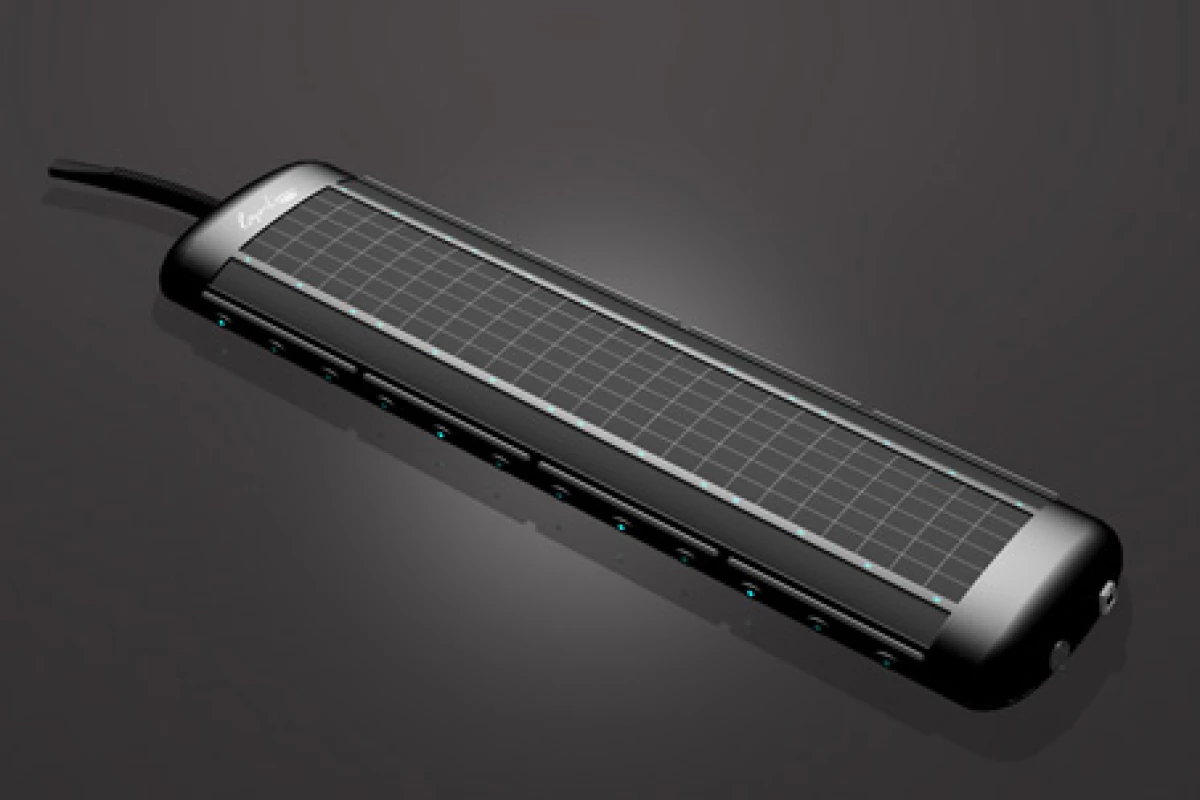The last time most of us heard of Roger Linn, it was when he put his name to the revolutionary Linn LM1 drum machine that became such an integral part of the sound of 1980s pop music - it was used on so many #1 hits that you'll recognize its signature sound straight away. Now, Linn has come up with a new and equally novel tool for musicians - a digital music interface that uses a pressure-sensitive multitouch pad and a layout that combines a piano keyboard with a guitar fretboard. The LinnStrument is one of the most expressive, evocative and enticing new musical instruments we've seen, and its potential is enormous - but it seems this innovative device might be prevented from coming to the market due to unfortunate IP squabbling in the multitouch sector.
Back in the 1980s, the Linn drum machine reigned supreme - the first drum sequencing machine to use real, digitally sampled drum sounds not analogue synthesis. You'd recognize its unique sound instantly - remember the frenetic drum groove behind Michael Jackson's Wanna Be Startin' Somethin', or Prince's 1999, or WHAM!'s Wake Me Up, Before You Go, Go? In fact, for a time there, it seemed like every second #1 hit song on the charts was using Roger Linn's clever sequencing machine - this one invention is inextricably linked with the music of that era.
Compared to the sterile-sounding analogue drum machines of the time, the Linn LM-1 was light years ahead. Certainly, it never felt like a real drummer, but it had a far more natural and human feel to it than anything that had come before it.
And it's this concept of "humanizing" a sound produced by machines that makes Roger Linn's most recent project, the LinnStrument, so fascinating.
The Linnstrument digital music interface
The LinnStrument is more or less just a digital music interface to replace the keyboard - but it makes use of some pretty advanced multitouch technology to make it one of the most interesting and expressive devices we've seen.
Linn's prototype touchpad is divided into squares, with each vertical row featuring a stack of 4th intervals, and each vertical stack separated by a semitone, similar to the layout of frets on a guitar. Once one or more notes are pressed, the benefits of the TouchCo multitouch surface come into play to make the LinnStrument one of the most expressive and easy to use digital instrument interfaces going around.
The TouchCo control surface is pressure sensitive, which lets you vary the volume of each note, both as it's initially played and afterwards for some very nice dynamic control.
Moving notes horizontally allows you to vary the pitch between semitones, for a natural sounding slide or vibrato effect.
And Linn has used the vertical access to control the tone of whatever sound you're playing with, a kind of frequency sweep effect.
The resulting music interface allows an amazing amount of expression and feeling - you can see a hint of what might be possible in Linn's demo video below - but be careful, the example bit of music he plays at the end is the first few bars of the notorious Hungarian suicide song, so if you're feeling a bit depressed afterwards, call a hotline.
Not shown in the video are a couple of extra control strips that you can use either like a sustain pedal, or to effect a strumming, blowing, picking or re-striking of the notes - dependent on the instrument sound you're using.
Naturally, being a digital interface, the sky's the limit when it comes to what you use the pressure and slide parameters for, and indeed what kinds of instrument sounds you're controlling. You can configure the keyboard in an instant to re-wire where each note is placed or effect different tunings. For a digital instrument, you have to admit this sounds amazingly organic, expressive and evocative -so you can bet that musicians will be very keen to get their hands on one.
But don't hold your breath
Sadly, that's unlikely to happen anytime soon - because the TouchCo multitouch pad that Linn used in the production of his prototype has been withdrawn from production. Apparently Amazon bought up the technology earlier this year with a view to using it in the Kindle eBook reader, but has completely shelved it and shut down the TouchCo operation, presumably due to the ongoing Intellectual Property chest-beating, suing and counter-suing going on in the multitouch arena right now.
So the TouchCo website has nothing but a sad placeholder to offer, and Linn has nothing but his pre-production prototype to work with, ruling out the possibility of a LinnStrument hitting the market in the immediate future.
While there are potential alternatives, there's nothing out there that's commercially available that offers the right mix of multitouch, pressure sensitivity and high input resolution that combine to give the LinnStrument prototype its sensitive and beautiful sound. It's a great pity when legal and commercial posturing block the way forward for a creative tool with such amazing potential. Here's hoping Mr. Linn finds a solution and gets this thing into the hands of the right musicians as soon as possible!





